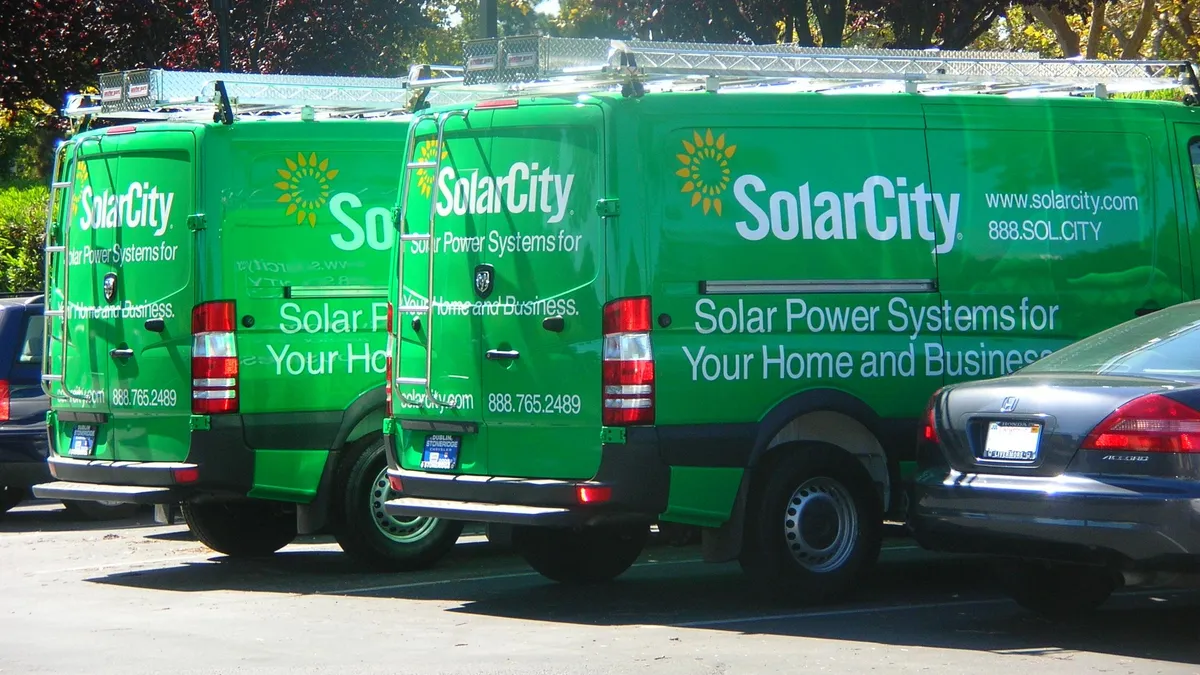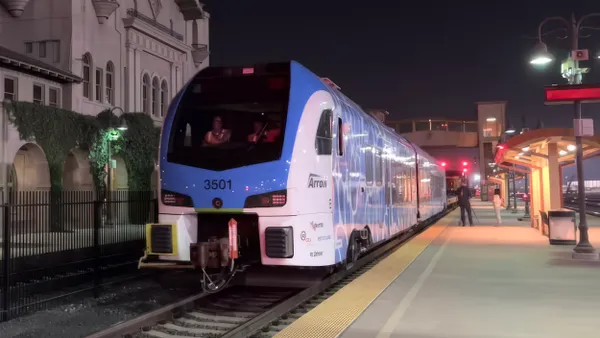SolarCity wants to know if smart thermostats can do for rooftop solar what they are doing for utilities across the country.
To find out, it is partnering with Nest to provide Learning Thermostats to the next 10,000 customers who sign up for SolarCity rooftop solar systems — if they have compatible air conditioning systems and agree to connect to the Works with Nest program.
“By the time those solar systems are being installed and the first thermostats are on the walls in those houses, there will be integrations that SolarCity customers will be able to take advantage of,” explained Nest Energy Products Director Ben Bixby. It will be a glimpse of “the Jetsons home of the future,” he said.
“This is not yet about how the solar system will work with the thermostat. It is only about SolarCity becoming part of the Works with Nest program and giving away 10,000 thermostats,” explained SolarCity Communications Vice President Jonathan Bass. “But we are going to begin development work on ways for solar and smart thermostats to work together.”
Nest expects to better understand the implications of adding a big number of self-generating homes to its system, Bixby said. SolarCity will learn how system-connected homes can best respond to solar’s periods of high and low output to increase their energy savings.
The partnership, announced this morning, is another big addition to the web of vertical integration and product diversification SolarCity is casting over the solar industry. Already the dominant U.S. residential rooftop solar installer with over a third of the market, it has expanded its business activities in recent years to include everything from module manufacturing to loan finance, and it is widely rumored that its partner Tesla Motors will release a home energy storage system at the end of this month.
Utilities are watching
National Grid, Detroit Energy, Ameren Illinois, Austin Energy and Southern California Edison are just a few of the dozens of utilities providing rebates for smart and programmable thermostats like the Nest device, the Filtrete by 3M Radio Thermostat, and Ecobee Thermostat. The most recent addition to the utility list is Southern Company.
Utilities see the thermostats as a means of shedding peak load and getting demand response program participation. The Nest Learning Thermostat is wired into a home’s central air conditioning and heating system via the same wiring as the existing thermostat. Bixby said the switch takes a non-professional 15 minutes to a half hour to install but for the new program it will be done by the SolarCity crew when the modules are mounted on the customers’ roofs.
The product, as evolved from Nest’s smart smoke detectors, goes beyond the typical smart thermostat’s capacity to be programmed to the homeowner’s preferences. Its memory records and learns those preferences as they change over time, and eventually initiates them.
“The Nest device gives the home a brain,” Bass said. “It will make small, unnoticeable adjustments in the temperature, maybe a degree while the occupants are asleep or half a degree in the morning, that lead to significant energy savings over time,” said Bass.
Nest, recently acquired by Google for $3.2 billion, is only beginning to fulfill its potential for assisting utilities in meeting demand peaks.
“This will be our third summer working with utilities on demand response through the Rush Hour Rewards product,” Bixby said. “The Nest devices use a series of algorithms that can pre-cool the home when the local grid is not capacity-constrained and curtail usage when a demand response event begins."
"It optimizes the home’s energy use to keep its occupants comfortable," he said, "while helping the utility shed load when it is critical to do so.”
Savings
EPA research concluded programmable thermostats provide $180 per year in average annual residential energy savings — heating and electricity combined. But independent studies of Nest device users from Oregon and Indiana and a Nest in-house white paper suggest combined heating and cooling savings are more likely between $131 and $145 per year for the average home.
Based on the 2015 EIA-calculated average annual U.S. heating and cooling cost of $988, Nest calculated average energy savings would be $131, according to the whtie paper. Based on an EIA-reported average U.S. residential electricity price of $0.13 per kWh and natural gas price of $13.15 per mcf, the annual savings would be $145, although those values would surely fluctuate depending on region and energy usage.
In either case, the Learning Thermostat would pay for its $249 retail price within two years and even faster with the utility rebates, Bixby said.
The future of the partnership
The vision, not just for Nest and SolarCity but for a world where thermostats and solar panels are generally connected, is that the savings would grow, Bixby said. The thermostat could pre-cool or pre-heat the home when the excess output from the solar on the rooftop would provide free electricity. Other “thoughtful” appliances, like a dryer, a light bulb, or a pool pump, could be autonomously used the same way.
Eventually, many think, the thermostat’s knowledge base could even include rate structure information that allows it to respond to utility price signals or decide when the homeowner would profit more from selling the solar to the grid at the net metered rate or using or storing it onsite.
“Right now,” Bass said, “the target market is any California homeowner who is interested in saving energy and saving money.” But the kind of integration SolarCity would like see in the future is having a solar system communicate with the thermostat so it could respond to the availability of solar power. Ultimately, he said, it will allow customers to change behavior based on the homeowner’s preferences, activities, and energy availability.
“This initial deployment,” Bixby said, “will be the distributed project in the U.S. where we learn and implement new standards for what’s possible and what is in the shared interests of customers, solar companies, utilities, and the grid.”












